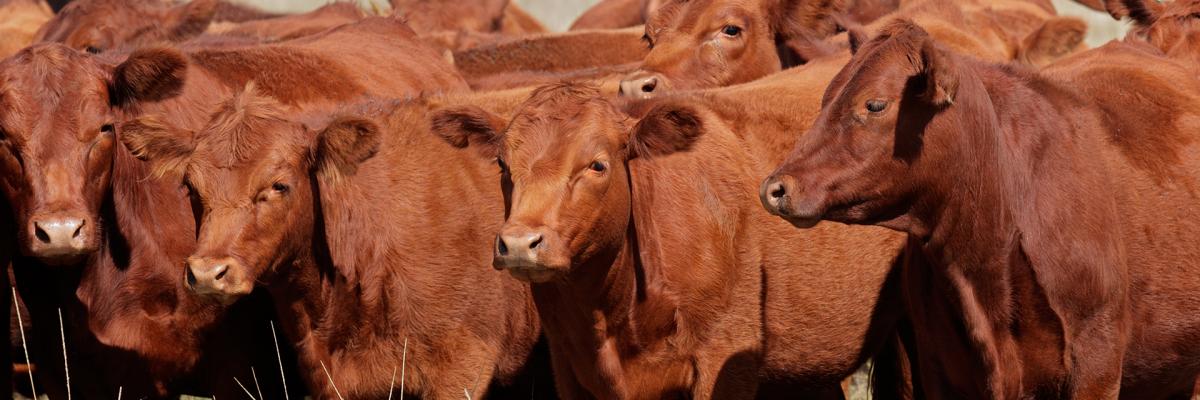
For the last two years, the People's Republic of China has been the largest recipient of processed and frozen meat exported from Argentina. Below, we will touch a little more on this crucial agreement for both nations.
Exports That Show Years of Quality
Since the middle of the 18th century, the meat business in Argentina has been one of the mainstays of the country's economy. Fertile land and climatic conditions have allowed its effective development, thus providing the opportunity to generate income through livestock exports.
The first exports took place in the mid-1600s; they were mainly focused on England and followed quite restrictive clauses and regulations that created conflicts for Argentina. With the process based primarily on live cattle, the negotiation with Argentina was highly competitive thanks to its lower costs (compared to European imports and exports). Great demand and high European expectations caused a remarkable improvement in Argentinean cattle quality and production.
Between 1880 and 1900, the growing meat processing industry facilitated the export of frozen sheep and beef. This allowed Argentina to consolidate its position as one of the most important meat exporters to Europe, especially with its high quality and low costs.
The export of Argentine meat continued to develop because of different crises in receiving countries. For example, in China, the African swine fever led to a loss of much of their own production which forced them to look for substitutes. In 2017, the People's Republic of China made an agreement with the Republic of Argentina to export meat to the Asian country.
A Masterful Move
June 2019 was a valuable month for the aforementioned agreement between the two countries because the sanitary protocols had been satisfactorily completed, giving way to the first shipment of frozen meat cuts to China.
From 2019 until now, Argentina is constantly affected by currency regulations that are variant and generate problems in different industries. They affect in different scales the citizens, the state and the country’s economy in general. This inevitably influences the meat export industry, since the exchange of bank products in USD is complicated, scarce and insecure, affecting also the international transactions by which the export is made.
However, over the last two years, the export of meat to China became a fundamental part of the economy, resulting in more than 50% (around 845,000 tons) of Argentina's total export in 2019. Then, even with the impact of the pandemic, there was an increase of up to 80% in the first few months of 2020.
The global pandemic resulted in Argentina's frozen meat exports going primarily to China. This was due to the decline in tourism and the impact on European restaurants, to which they had been exporting high-quality meat. Official sources report that in the first quarter of 2020, Argentine production increased by 3% and exports by 15%, with most of those exports destined for China.
Argentina became the second largest meat supplier to China after Brazil, and with this increase, there was a significant drop in prices. On the whole, China made a large-scale investment in Argentina, which promoted progress and also encouraged building facilities dedicated to massive pig farming for the export of pork.
In November 2020, Argentina was invited to the China International Import Expo (CIIIE), demonstrating the close export relationship between the two countries.
Main Attraction
The business between the two countries is also influenced by the notable difference between the cuts of meat they consume, as they are somewhat different. The high-quality cuts sent to China are used for the country's extensive culinary needs, and as such, they are willing to pay more for the product than any other importer from America or Europe.
The main types of meat exported to the country during the last two years include:
- Chilled and frozen beef on the bone.
- Chilled and frozen boneless beef.
- Sheep meat.
- Goat meat from Patagonia.
- And, due to the investment made in Argentina, an increased export of pork
Exports to China Compared to Other Countries
The export to China is so big and important for Argentina that China comes in first by a significant majority when 2019 numbers are compared to other countries:
- China - 68.8%.
- Chile - 8.5%.
- Israel - 5.1%
- Germany - 5.1%
- Russia - 4.7%
- Netherlands - 2.4%
- Brazil - 1.8 %
- Italy - 1.4%
- Hong Kong - 0.4%
- Others - 1.8%
Source: National Institute of Statistics and Census of Argentina, 2019
The Impact of Banking Regulations on Exports
Argentina is the country with the second highest beef consumption per capita and is one of the most important countries in the world in terms of beef exports. As such, it is important for Argentina to be extremely careful that they don’t find themselves at the mercy of another country’s regulations. And while Argentina’s meat exports have not yet been significantly impacted, they have also seen constant changes in their own economy, almost monthly, that affect regular lines of credit for export businesses and add increased uncertainty to international transactions.
Heavy currency controls and regulations in Argentina since late 2019 have made banking products in United States dollars quite scarce and, in some instances, unreliable. For example, regular credit lines and pre-financing solutions, or “prefis”, are increasingly difficult to obtain or renew in USD. A potential solution specific to the frozen beef and pork industries is to obtain advance funding on their Cash Against Documents (CAD) or Telegraphic Transfer (TT) after the product is loaded onto the vessel and original shipment documents are available. This helps the exporter drastically shorten the amount of time it takes to collect payment (transit times to East Asia are typically 40-60 days), increasing cash flow and mitigating credit risks.
